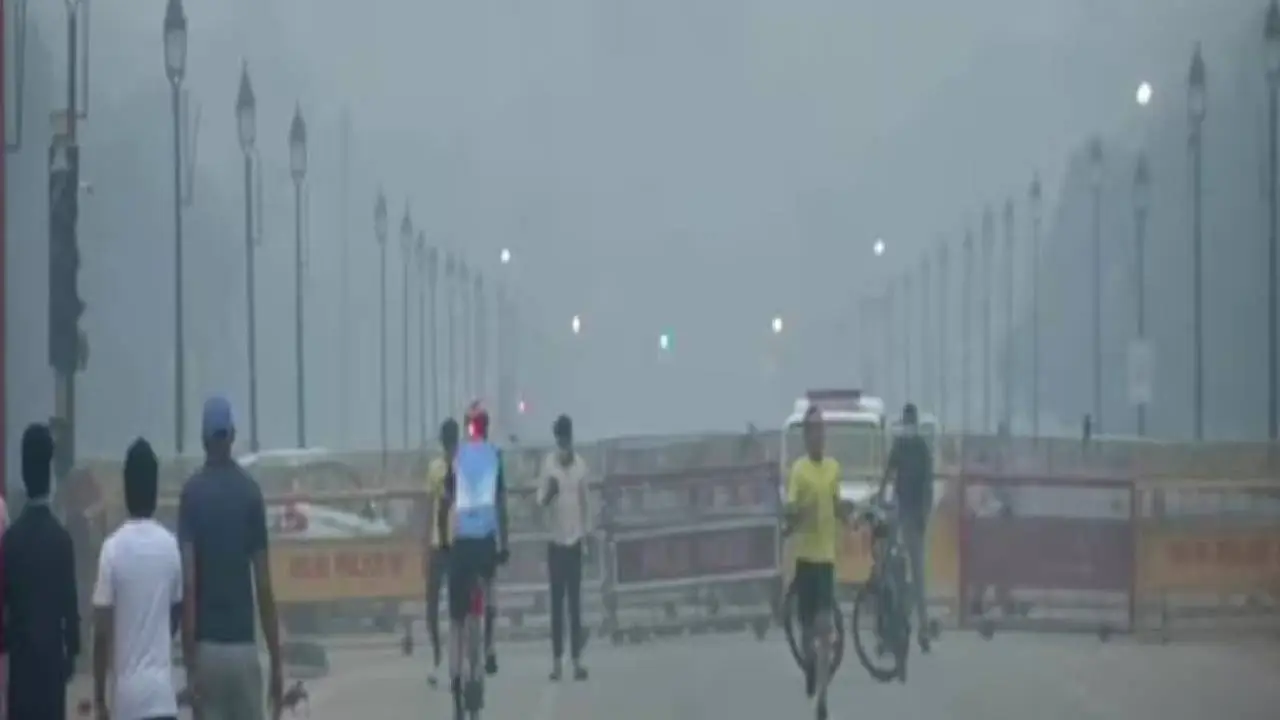
pollution (Credit:Top india News)
National news: On Monday, Delhi woke up under a thick layer of smog that choked the city’s residents. The Air Quality Index touched 301, placing it in the ‘very poor’ category. The visibility dropped sharply, slowing down traffic and creating chaos on roads. Commuters covered their faces with scarves and masks to breathe better. Children and elderly people faced greater difficulties while stepping outside. Experts warned that such conditions could severely harm lungs and trigger respiratory problems. The city once again struggles to breathe clean air.
According to Central Pollution Control Board, Anand Vihar recorded the highest pollution level at 395 AQI. Wazirpur followed closely with an AQI of 385. Out of 38 monitoring stations in Delhi, 22 recorded ‘very poor’ air. No location reported ‘severe’ levels, but the overall situation remained alarming. Residents complained of eye irritation, throat infections and constant coughing. The data reflects how widespread the pollution crisis has become. Delhiites are forced to cope with unsafe air every winter without long-term solutions.
The India Meteorological Department reported that Delhi’s maximum temperature stood at 29.5°C, 1.3 degrees above normal. The minimum was 17.3°C, also slightly above average. Humidity ranged between 94 and 58 percent during the day. Officials predicted mist and haze on Tuesday morning. They also forecast very light rain or drizzle at isolated places later in the day. This rainfall, though minimal, could settle suspended dust and reduce pollutants. Citizens are anxiously waiting for even a small change to make breathing easier.
Data from the Indian Institute of Tropical Meteorology revealed that vehicular emissions contributed 13.7 percent to Delhi’s pollution load. Ghaziabad added 10.6 percent, while Meerut contributed 4.8 percent. Local sources within Delhi caused 3.6 percent of emissions. Other pollution sources together added nearly 20 percent more. The figures prove that pollution is not only Delhi’s problem but also the NCR’s collective responsibility. Rising traffic density and weak control measures are further complicating the fight against bad air. Long-term policies seem far from effective implementation.
Satellite data from October 26 recorded 122 stubble-burning cases in Punjab. Haryana reported 8 incidents while Uttar Pradesh accounted for 186. These burning fields release huge amounts of smoke and particulate matter. Carried by winds, these pollutants travel to Delhi and worsen its air quality. Year after year, the same pattern repeats with little improvement. Governments announce schemes to discourage farmers, but ground action remains weak. The seasonal burning continues to be a major villain for Delhi’s winter smog.
Doctors have urged people to avoid stepping out during morning and evening peak pollution hours. The toxic air especially threatens asthma and allergy patients. “Winter air traps pollutants longer, making breathing extremely dangerous,” explained Dr Hinal Shah. She recommended the use of N95 masks and air purifiers at home. Residents are being asked to keep children and the elderly indoors. Hospitals have already reported an increase in respiratory complaints. The health crisis is now running parallel with the environmental disaster.
The IMD has placed cautious hope on light drizzle on Tuesday. If rainfall occurs, it may temporarily reduce dust and pollution levels. However, experts warn that only heavy or prolonged rain can significantly clean Delhi’s air. The big question is whether such short showers will truly help. For now, citizens remain stuck between rising pollution and faint hopes of relief. The problem is systemic, demanding strict measures rather than weather-based solutions. Delhi continues to gasp, waiting for cleaner skies and breathable air.





Copyright © 2025 Top Indian News
